#AIInTranslation
Explore tagged Tumblr posts
Text
How to Improve the Accuracy of OCR Translation Tools?
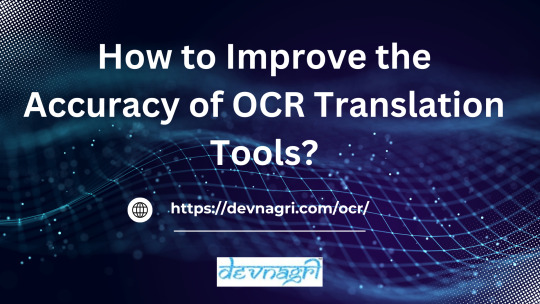
Optical Character Recognition (OCR) technology got better and better over the past decade thanks to more elaborated algorithms, more CPU power,r, and advanced machine learning methods. Getting to OCR translation accuracy levels of 99% or higher is however still rather the exception and definitely not trivial to achieve.
We learned at Devnagri AI the hard way how to fine-tune our OCR engine to achieve good OCR accuracy and spent weeks fine-tuning our Image to Text Converter Online engine. So, if you are in the process of setting up an OCR solution and want to know how to increase the accuracy levels of your OCR engine, then keep on reading…
This blog talks about various techniques to enhance OCR accuracy and shares what we learn from building a world-class OCR system for Devnagri AI.
So, First, Let's Define OCR Translation Accuracy
Now when talking about OCR accuracy, there are two ways of measuring how reliable OCR is:
Accuracy on a character level: In most cases, the accuracy in OCR technology is gauged on a character level. The extent to which an OCR software is accurate on a character level is determined by how often it recognizes a character correctly and how often it recognizes a character incorrectly. A 99% accuracy means that 1 out of every 100 characters is uncertain. However, an accuracy of 99.9% means that 1 out of every 1000 characters is uncertain.
Accuracy on a word level: Most OCR translation engines use extra language knowledge about text to enhance their word-level accuracy. That is if the language is known where the text, for instance, is the English language, words recognized can then be compared to the dictionary of all extant words-for example, to all words in an English language corpus. Words containing uncertain characters can then be "fixed" by finding the word inside the dictionary with the highest similarity.
In this blog, we will focus on improving the accuracy of character level. The more accurate characters are recognized, the less "fixing" on a word level is required.
How to Increase Accuracy With OCR Translation Image Processing?
Assuming that you have already settled on an Image to Text Converter Online engine, we're now down to one single moving part in the equation to improve the accuracy of OCR:
Good Quality Original Source
Yes, we're repeating this on purpose! The very first simple step in obtaining precise OCR translation conversions is guaranteeing the good quality of the source images. First off, see that the original paper document does not contain tears, creases, or fading or was printed in poor contrasting color ink. In that case, outputting won't be clear enough. Use therefore the cleanest and the most original source of the file to convert.
Scaling To The Right Size
Make sure the images are at the appropriate resolution and are usually of at least 300 DPI (Dots Per Inch). Lowering DPI below 200 results in blurry and unclear images. A higher DPI of above 600 unnecessarily inflates the output file size but fails to improve the quality of the file. Therefore, 300 DPI is appropriate in this regard.
Increase Contrast
Low contrast can lead to poor OCR Translation. Increase the contrast and density before scanning. This can be done directly in the scanning software or any other image-processing software. Increasing the contrast of the text/image with its background brings out more clarity in the output.
Binarize Image
This is a step that converts a multicolored image (RGB) into a black-and-white image. There are several algorithms for converting a color image to a monochrome image, ranging from simple thresholding to more sophisticated zonal analysis.
What We Learned From Building The Devnagri AI OCR Pipeline?
When there is one thing learned about OCR accuracy, there is no silver bullet, and nothing is easier when it comes to shortcutting Image to Text Converter Online performance. You must inspect the documents carefully before attempting anything. Once you know your shortfalls, you can proceed to the applications of preprocessing steps as aforementioned to improve the accuracy of your OCR translation.
It is key to understanding how preprocessing works to tailor a preprocessing pipeline for the documents that you want to process. That's why we wanted to expose all preprocessing options to our users in Devnagri AI. Our default settings actually work well for most cases, but every preprocessing step can be tweaked according to the type of document that a user wants to process.
#OCRTranslation#OCRAccuracy#TranslationTechnology#AIinTranslation#LanguageRecognition#MachineLearning#TextRecognition#TranslationTools#OCROptimization#LanguageAI
0 notes
Text
The Future of Simultaneous Interpreting Services: AI vs. Human Interpreters
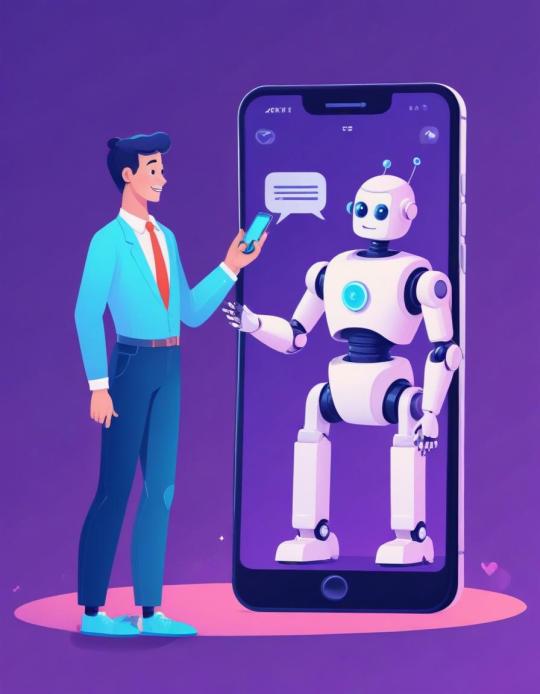
The landscape of simultaneous interpreting services is undergoing a significant transformation, driven by advancements in artificial intelligence (AI). Recently, a Tokyo-based public research institute under the Internal Affairs and Communications Ministry developed an AI capable of simultaneous interpretation with a natural conversational flow. Created by the National Institute of Information and Communications Technology (NICT), this AI is set to be deployed at the 2025 Osaka-Kansai Expo and is expected to be used in international negotiations by 2030. But how does AI stack up against human interpreters in this critical field? This article explores the comparison between AI and human interpreters, focusing on accuracy, tone and nuance, potential displacement of human interpreters, and the future trends of the industry.
Accuracy: The Core of Interpretation
Accuracy is very important in simultaneous interpretation, where the goal is to convey a speaker’s message with as little distortion as possible. Human interpreters have long been the gold standard, drawing upon their deep understanding of language, culture, and context to deliver precise translations. However, even the best interpreters can struggle under the immense pressure of real-time translation, occasionally leading to minor inaccuracies or omissions.
AI interpreters, on the other hand, benefit from vast databases of linguistic data and specialized glossaries, enabling them to deliver highly accurate translations. The AI developed by NICT, for example, was trained with the assistance of seasoned interpreters and can perform bidirectional interpretation in multiple languages, including Japanese, English, Chinese, Korean, and French. However, AI’s accuracy can still be limited by its programming, especially in complex or ambiguous contexts where cultural knowledge and human intuition are essential.
Tone and Nuance: The Human Element
One of the most significant challenges for AI in simultaneous interpreting is capturing the subtlety of tone and nuance. Human interpreters excel in this area, as they can understand the emotional undertones and cultural context behind words, adjusting their interpretation to reflect the speaker's intent accurately. This ability is crucial in diplomatic or high-stakes negotiations, where a slight misinterpretation could lead to misunderstandings or conflict.
AI, despite its advancements, still struggles to consistently interpret tone and nuance correctly. While it can recognize and replicate certain speech patterns, it often lacks the cultural and emotional intelligence that human interpreters bring to the table. For now, this remains a critical limitation of AI in the field of simultaneous interpretation.
Will AI Replace Human Interpreters Entirely?
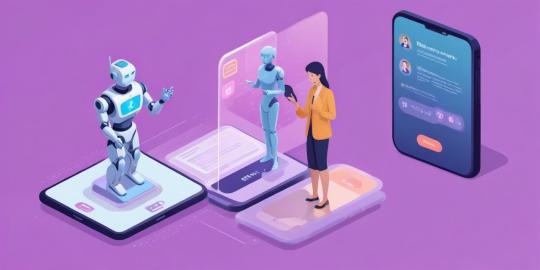
The question of whether AI will eventually replace human interpreters is a topic of ongoing debate. AI’s rapid development suggests that it could handle a growing number of interpreting tasks, particularly in environments where speed and efficiency are prioritized over nuanced communication. In settings like large conferences or routine business meetings, AI interpreters may become the preferred choice due to their ability to process information quickly and consistently.
However, in situations where the stakes are high, and the need for cultural sensitivity is paramount, human interpreters are likely to remain indispensable. The subtle art of interpreting goes beyond word-for-word translation, requiring a deep understanding of context, tone, and intent—qualities that AI has yet to master fully.
Adapting to the Future: How Human Interpreters Can Thrive
As AI continues to evolve, human interpreters will need to adapt to maintain their relevance in the industry. This could involve working alongside AI to handle the more routine aspects of interpretation while focusing on the areas where human expertise is most needed. Interpreters may also need to develop specialized skills in interpreting complex and culturally sensitive material, positioning themselves as experts in areas where AI still falls short.
Moreover, ongoing professional development will be crucial. By staying up-to-date with technological advancements and continuously refining their linguistic and cultural knowledge, human interpreters can ensure they remain competitive in a rapidly changing field.
The Pros and Cons of AI in Simultaneous Interpreting
Pros:
Efficiency: AI can process and translate information quickly, making it ideal for fast-paced environments.
Consistency: AI provides consistent translations, free from the fatigue or stress that can affect human interpreters.
Scalability: AI can be deployed across multiple languages and regions simultaneously, offering broad accessibility.
Cons:
Lack of Cultural Sensitivity: AI often struggles with the nuanced understanding of cultural context and emotional tone.
Dependence on Data: AI's accuracy is heavily reliant on the quality and scope of its training data, which may not cover all linguistic subtleties.
Limited Adaptability: AI can struggle in unpredictable or highly complex situations where human intuition is required.
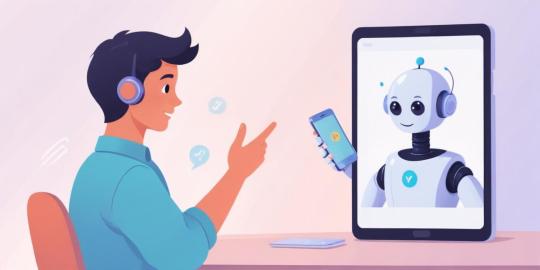
Future Trends: The Path Ahead
Looking ahead, the future of simultaneous interpreting services is likely to be a hybrid model where AI and human interpreters work together. AI will handle the bulk of straightforward translations, while human interpreters will be called upon for more intricate tasks that require a deep understanding of cultural context and emotional nuance. This collaboration could lead to more efficient and accurate interpretation services overall, combining the strengths of both AI and human expertise.
Additionally, as AI technology continues to improve, we may see the development of more sophisticated systems capable of better understanding and replicating human-like interpretation. This could further blur the lines between AI and human interpreters, creating a dynamic and evolving industry.
In conclusion, while AI is poised to play an increasingly important role in simultaneous interpreting services, human interpreters are far from obsolete. By embracing the opportunities presented by AI and focusing on areas where human skills are irreplaceable, interpreters can continue to thrive in a rapidly changing world.
#SimultaneousInterpreting#AIInterpreters#HumanInterpreters#InterpretingServices#AIvsHuman#TranslationTechnology#InterpretationAccuracy#LanguageServices#FutureOfInterpreting#AIInTranslation#CulturalSensitivity#MachineLearning#InterpreterSkills#LanguageAI#GlobalCommunication#AIInnovation#TechInLanguage#InterpreterLife#ConferenceInterpreting#MultilingualAI#TechAndHumanCollaboration#InterpretingFuture#AITranslation#NuanceInInterpreting#AIInConferences
0 notes
Text
Rise of AI into Machine Translation API redefining the Translation Industry
Understanding the new era of artificial intelligence backed by machine learning is complicated. Machine translation is also on the trend utilizing the latest technologies available out there. Companies specifically large enterprises and SMBs are using machine translation API ensuring high accuracy and scalable content. Even government organizations in the management and security as well are into a lot of translation.
At the pace at which AI is developing, we can look at the future easily. Even the news is older about training neural networks on computers to store information and make it available customized and filtered as per requirement. These networks are backed by generative AI but still make mistakes because these networks still cannot be analyzed at a certain human level.
Still, large organizations are processing their operations with a combination of artificial and human-based intelligence. Undeniably, our machine can not start thinking like human beings suddenly but these tools are still on the training model.
Now if we talk about the translation industry, Machine Translation APIs come into the game where these tools use the generative API and are on tegular training backed by machine learning as discussed in the introduction at the beginning of this blog.
Now what’s new with machine translation APIs during the rise of AI in the market
Size Matters
Now size also matters with an increase in requirements of the translation content in sort of types including the visuals, audios, and videos as well apart from the text. Organizations are translating the contexts not only into official or most popular languages.
Also, the local dialects to localize their content as well as the business. Training and manipulating the data is part of training models which is important to build a database empowering the robust functionalities into the machine translation API.
Speed is Everything
Now speed is everything in this fast-forward era, here people compete on speed. No one has time, technology is moving forward at a pace that couldn’t have been imagined a few decades back. Every day is something new out there in terms of content in the market.
Now Generative AI tools in the market whether they are paid or free, no one has a monopoly in the market they all are facing competition. Every giant across the globe has its own AI for the users.
Changes to The Translation Industry
The question arises that the whole will think about the business looking to localize their business in the market.
Who is sitting to customize the services for their business according to the use case? Also, the people residing deep in the different regions of the world almost everyone is using the internet but everyone is not contributing to it.
Moreover, most of the content is in English over the content. How the local people will access that content until and unless they know the international English Language?
Summing Up
Far from the large language models here comes the small language models and machine translation APIs that support the website translation and app translation in terms of multiple languages helping the companies to reach their users and distribute their services at a vast level.
Not only the product and service market but also the market that supports education, hospitality, banking, business, government, security, e-commerce, and media. Keep reading for more.
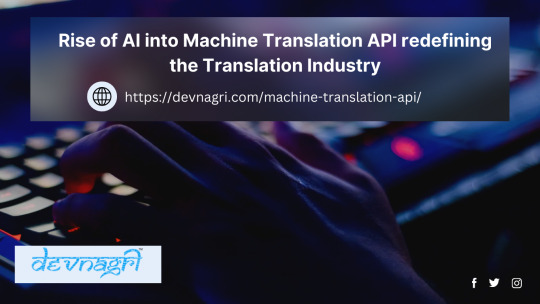
#AITranslation#MachineTranslation#AIinTranslation#TranslationTechnology#LanguageAI#TranslationInnovation#FutureOfTranslation#AIRevolution#TechInTranslation#SmartTranslation
0 notes
Text
How Machine Translation APIs are Revolutionizing Regional Communication
Discover how machine translation APIs are bridging language barriers and transforming regional communication, enabling businesses and communities to connect and collaborate effortlessly across languages. Dive into the latest trends and technologies that make cross-lingual understanding easier and more accessible.
For More Info-https://linguacop.eu/blog/how-machine-translation-apis-are-transforming-regional-communication/
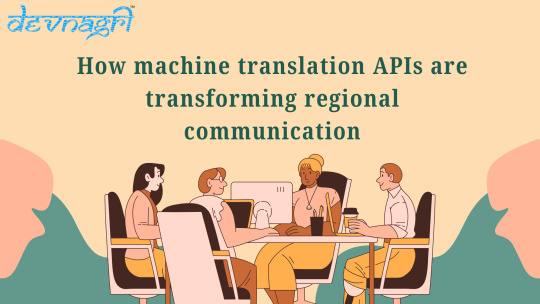
#MachineTranslation#TranslationAPI#LanguageTech#RegionalCommunication#GlobalConnectivity#AIinTranslation#LanguageBarrier#CrossCultural#Localization#FutureOfCommunic
0 notes